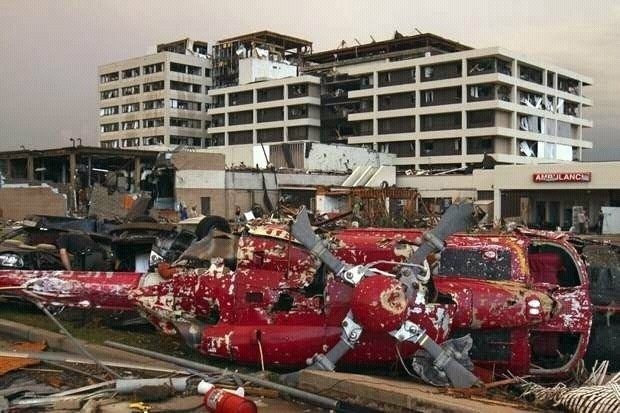
Darkening skies still carry a sense of dread for Mercy co-workers who endured the tornado that destroyed the hospital in Joplin in 2011. But time has helped temper those feelings, and storm-hardened features integrated into the new hospital give co-workers confidence they can care for patients in case of another devastating storm.
“I grew up on a farm, so I’ve always been attuned to the weather,” said Kevin Kepley, critical care nurse manager in Joplin. “For a while, we were on high alert, but now it doesn’t really bother me as much. There’s a sense of comfort knowing the windows in the critical care areas are rated for hurricane wind speeds. And knowing there are hurricane doors that we can close to create a safe zone for our patients.”
The historic tornado offered many lessons about how to build facilities that could withstand a destructive storm. Features like laminated safety glass, concrete exterior panels and below-grade shelters were incorporated into the new hospital, opened in 2015. Mercy did not stop there. Knowing many Mercy facilities lie in zones prone to tornadoes, Mercy has built storm-hardened features into projects across Arkansas, Kansas, Missouri and Oklahoma.
The features vary by community and by the type of facility. Clinics serving ambulatory patients can be evacuated quickly, so they are most likely to feature just safety glass and small shelters. In hospitals, patients and co-workers must shelter in place, so more storm-hardened features, including lightweight concrete roofs and concrete-enclosed stairwells, are integrated into designs, said John Farnen, Mercy vice president of planning, design and construction.
“In a hospital, we do more, because we can’t easily vacate a hospital tower or move patients to a basement,” he said.
Maintaining power during a disaster is paramount, and all new Mercy facilities are served by two substations in addition to generators enclosed in concrete bunkers. Electric cables are buried to prevent lines being downed by debris.
For every project, local leaders evaluate risks and decide which features are necessary, Farnen said. Mercy has found storm-hardened features generally add a 2-3 percent increase to a project’s budget.
“Each facility is a little bit different, and local leaders know their community best,” Farnen said.
In St. Louis, near the New Madrid fault, new facilities incorporate earthquake-resistant features not needed elsewhere, for example.
Safety considerations have to be weighed against the desire to create a warm, welcoming hospital for visitors and spaces that promote healing for patients, Farnen said.
“Below ground is still the best place to be, no matter what we do to a building, but that’s not what’s best for patients. Patients need natural light to heal. Code requires all patient rooms have windows - and that’s for good reason,” he said.
As a result, building designs try to strike a balance between aesthetics and safety.
“We can design the building in a way that it doesn’t look like a concrete fortress. There will be a concrete roof, but people don’t even know it’s concrete,” he said. “It has the look and feel that we want, but we can still make it as safe as possible.”
Tornado season is generally considered to peak from April through June, and Joplin and other communities across Mercy have already had storm warnings this year.
Storm season always causes tension in the Joplin area, said Dennis Manley, chief nursing officer for Mercy Joplin and Carthage.
“We have a heightened sense of awareness and with that comes an increased level of anxiety,” he said. “The added storm hardening that was included in the construction of the new hospital provides a level of comfort and a sense of additional protection from the unpredictable severe weather that we experience this time of year.”
Farnen said he has confidence that the storm-hardened features will ensure co-worker and patient safety during a tornado. There’s no data to prove that, however.
“Different components have been tested, but there hasn’t been a test of the entire building with storm-hardened features Mercy now puts in place,” he said. “I hope there never is, because I hope Joplin was once in a lifetime.”

Learn More About Mercy Hospital Joplin's Design

